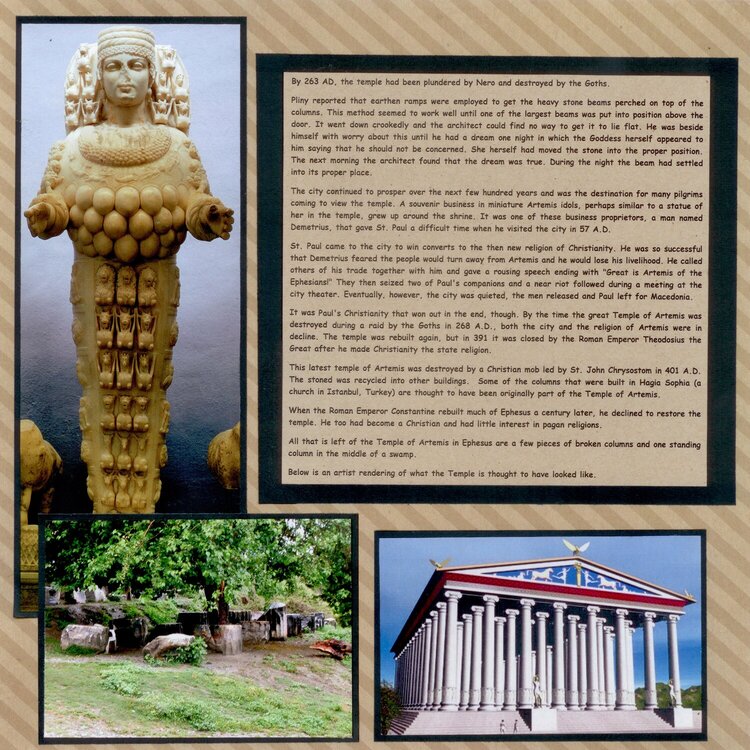

 Give a Cheer
Give a Cheer
By 263 AD, the temple had been plundered by Nero and destroyed by the Goths.
Pliny reported that earthen ramps were employed to get the heavy stone beams perched on top of the columns. This method seemed to work well until one of the largest beams was put into position above the door. It went down crookedly and the architect could find no way to get it to lie flat. He was beside himself with worry about this until he had a dream one night in which the Goddess herself appeared to him saying that he should not be concerned. She herself had moved the stone into the proper position. The next morning the architect found that the dream was true. During the night the beam had settled into its proper place.
The city continued to prosper over the next few hundred years and was the destination for many pilgrims coming to view the temple. A souvenir business in miniature Artemis idols, perhaps similar to a statue of her in the temple, grew up around the shrine. It was one of these business proprietors, a man named Demetrius, that gave St. Paul a difficult time when he visited the city in 57 A.D.
St. Paul came to the city to win converts to the then new religion of Christianity. He was so successful that Demetrius feared the people would turn away from Artemis and he would lose his livelihood. He called others of his trade together with him and gave a rousing speech ending with "Great is Artemis of the Ephesians!" They then seized two of Paul's companions and a near riot followed during a meeting at the city theater. Eventually, however, the city was quieted, the men released and Paul left for Macedonia.
It was Paul's Christianity that won out in the end, though. By the time the great Temple of Artemis was destroyed during a raid by the Goths in 268 A.D., both the city and the religion of Artemis were in decline. The temple was rebuilt again, but in 391 it was closed by the Roman Emperor Theodosius the Great after he made Christianity the state religion.
This latest temple of Artemis was destroyed by a Christian mob led by St. John Chrysostom in 401 A.D. The stoned was recycled into other buildings. Some of the columns that were built in Hagia Sophia (a church in Istanbul, Turkey) are thought to have been originally part of the Temple of Artemis.
When the Roman Emperor Constantine rebuilt much of Ephesus a century later, he declined to restore the temple. He too had become a Christian and had little interest in pagan religions.
All that is left of the Temple of Artemis in Ephesus are a few pieces of broken columns and one standing column in the middle of a swamp.
Below is an artist rendering of what the Temple is thought to have looked like.
No products have been added to this project.
Thanks for spreading positivity!
December 16, 2014
December 13, 2014
December 07, 2014
December 05, 2014
December 04, 2014
December 04, 2014
December 03, 2014
December 03, 2014
December 02, 2014
December 02, 2014
December 02, 2014
December 01, 2014
December 01, 2014
December 01, 2014
December 01, 2014